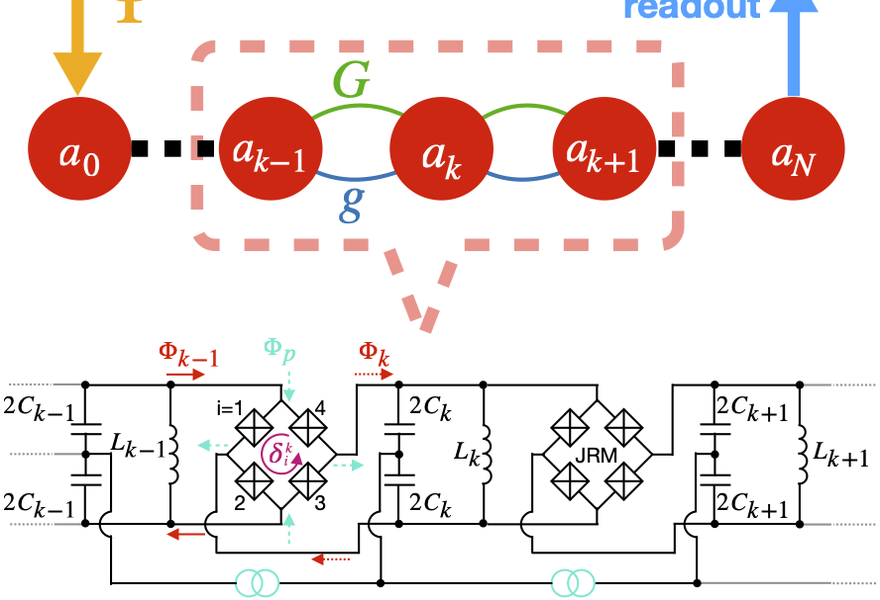Boosting high-frequency gravitational wave and ultralight dark matter searches

Searching for gravitational waves at frequencies above the kilohertz range requires detector designs beyond traditional laser interferometers. Resonant cavities and superconducting circuits—already widely used in the search for ultralight bosonic dark matter such as axions and dark photons—have recently been proposed as promising platforms for high-frequency gravitational wave detection as well. However, conventional resonant detectors typically exhibit strong responses only within a narrow bandwidth. This limitation necessitates extensive scanning to cover broad frequency ranges and makes it challenging to capture dynamic features such as frequency drifts during events like primordial black hole mergers.
In a recent publication in Reports on Progress in Physics, Strong group member Yifan Chen and collaborators introduce a novel detector architecture that significantly broadens the bandwidth of resonant cavity systems. By using superconducting Josephson junctions to establish quantum-entangled couplings among multiple resonant modes, the design surpasses the standard quantum limit of single-mode resonators. This enables enhanced sensitivity over a wide frequency range for both ultralight boson dark matter and high-frequency gravitational wave detection.
Beyond this theoretical advancement, Yifan has been involved in several terrestrial experimental searches for ultralight bosons, with results published in Physical Review Letters, Nature Communications, Science Bulletin, and National Science Review.
May 7, 2025, 3:41 a.m.